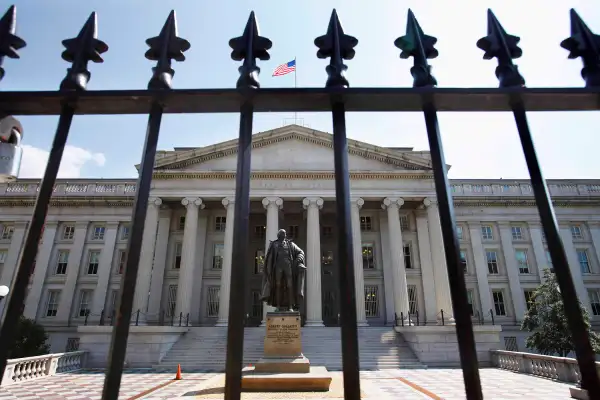Why Investing in Bonds Is Still a Risky Business
Money is not a client of any investment adviser featured on this page. The information provided on this page is for educational purposes only and is not intended as investment advice. Money does not offer advisory services.

People like me have been telling you for several years now that buying long-term U.S. Treasury securities is a bad idea. But if you happened to ignore us, you’ve done much better than those of us who have put our money in stocks.
Let me show you the numbers, which Vanguard calculated for me.
For the 12 months that ended July 14, Vanguard’s Long-Term Treasury Fund produced an astounding 21.9% total return—interest, capital gains, and reinvested dividends—for its shareholders. Meanwhile, the total return of the equivalent S&P 500 index fund was only 4.9%.
The Treasury fund produced this huge return because rates on Treasuries have fallen sharply during the past year. A year ago, the yield on the Treasury fund was 3.0%. Now with long-term Treasury rates at near-record lows, the yield is down to 2.0%, less than the 2.1% dividend yield on the S&P 500 fund.
Why am I inflicting all these numbers on you?
First, it is part of my campaign to warn against putting too much faith in experts—or “experts,” as I call them. I want to show you that conventional wisdom givers, which in this case included me, have been known to get it wrong.
Second, as several emailers who take exception to my warnings about the dangers of long-term Treasuries have pointed out, people who have ignored my advice have done extremely well.
Third and final: I’ll try to show you why, the past year’s return notwithstanding, I think long-term Treasury securities are even riskier than they were a year ago.
Before anything else, let’s take a brief course in bond math. When interest rates fall, the market value of existing bonds rises. A 3% $10,000 Treasury bond that yields $300 of annual interest will be worth considerably more than $10,000 in a world in which rates have fallen to 2%—where a new $10,000 bond yields only $200 a year.
But when rates rise, things reverse. The price of existing bonds declines. If you can pay face value for a $10,000 bond that produces $300 of annual interest, you will pay considerably less than face value for a bond producing only $200 of interest.
This means that the vast majority of the return that Treasury fund holders got over the past year was from declining interest rates. But if rates on the fund’s portfolio are back to 3% a year from now, fund holders will have taken a substantial loss—something on the order of 12% to 15%, by my horseback estimate.
Even if rates zoom up to 4%, the losses won’t approach the 50% losses that S&P index fund holders suffered when markets tanked after the Internet stock bubble burst in 2000 or during the 2008-09 financial crisis. But it will be a considerable hit to people who own what they think is a safe investment.
I’m not telling you to run out and buy stocks, which certainly aren’t cheap. And sure, I’ve been wrong about Treasury rates for a few years now. But as you can see from the numbers above, long-term Treasury fund shares aren’t cheap, either.
Unless you think that Treasury rates are going to fall to 1% a year from now and to zero a year after that, there’s no way you can make a double-digit annual return in bond funds. But if rates rise, you can get a double digit loss.
And that, my friends, is the bottom line.
